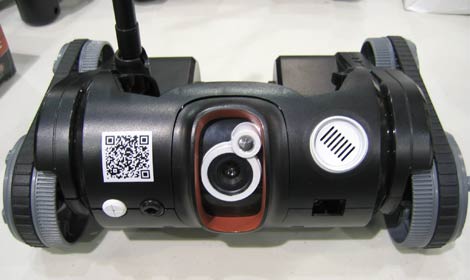
Maybe $15K for an elaborate balancing telepresence robot is a bit out of one’s league. In that case, another Bay Area Maker Faire exhibitor — Wild Planet — has you covered. Faire attendees got a hands-on sneak preview of the upcoming Spy Video TRAKR, a video-transmitting radio-controlled toy that’s programmable and extensively hackable.
The TRAKR has an impressive pedigree. It’s a collaborative effort between three successful and creative technology companies: Wild Planet, makers of the Spy Gear toy line; MOTO Development Group, designers of the Flip Video camera; and Making Things, software designers for the Make Controller.
So just how hackable are we talking? The Spy Video TRAKR is intended right out of the box to use downloadable apps, and allows development of new programs in C. The controller and vehicle each contain their own ARM9 processor, and the ’bot features 8 megs of RAM, an SD card slot and USB client and host (yes, host) ports. And that’s all with the cover still on. Pop the lid, and you’ll find links to online schematics and neatly-labeled breakout headers for deeper exploration.
The Spy Video TRAKR is expected to ship in October with a target price of $139 or less. Additional photos after the break.
Continue reading “BAMF2010: Spy TRAKR – No Lasers, $14,861 Cheaper” →















